mobile View, to the German Version tap the flag


- Autonomous Region of Spain
- former Kingdom of Granada and Provinces of Spain
- own name: Andalucía
• Flag
• Historical and other Flags
• Meaning/Origin of the Flag
• Coat of Arms
• Historical Coats of Arms
• Meaning/Origin of the Coat of Arms
• Map of the autonomous regions of Spain
• Numbers and Facts
• History
• Origin of the Country's Name
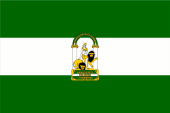
Flag of Andalusia,
ratio = 2:3,
Source, by: Flags of the World






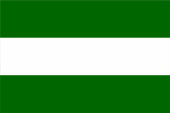
1918–1981,
unofficial flag of Andalusia,
Source, by: Flags of the World



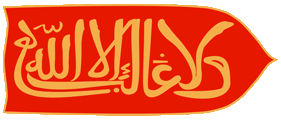
to 1492,
alleged flag of the Emirate of Granada,
Source, by: SanchoPanzaXXI, CC BY-SA 4.0, via Wikimedia Commons



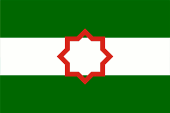
Flag of local nationalists,
Source, by: Wikipedia (ES)



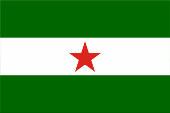
Flag of leftist local nationalists,
Source, by: Wikipedia (ES)




The today's flag of Andalusia was designed in 1918 by Blas Infante. It shows three horizontal stripes in green, white and green and today the coat of arms of the country in the middle of the white stripe. It was officially introduced on 30th of December in 1981. For explanation of meaning and origin of the colours there exist many theories which contradict each other:
• Blas Infante wanted to remember the colour of the Omaijads with the colour white, and the both green stripes stand for the rivers Guadiana and Guadalquivir, but the Guadiana flows not in Andalusia
• Blas Infante wanted to represent the peace with the colour white, and pointed out to the dynasty of the Nasrids with the colour green
• The colours should stand for the calif dynasties of the Omaijads (white) and the Fatimids (green)
• White stands for the homeland and green for its natural wealth
• White and green stand for peace and hope
Indeed play green and white-green flags a special role in the history of the country. The colours are known since the Middle Ages, but it seems that they had only an unofficial character, later – in the Spanish times – white-green flags are known as banners of anti-spanish riotings of Moriscos and separatists. The first islamic rulers of the country – the dynasty of the Omaijade califs – used white flags. About the flags of the Almoravids (seizure of power in 1086) is nothing known. The Almohads (seizure of power in 1147) should have ostensibly used white flags, but the flag of the Almohads in the battle of Navas de Tolosa (1212) showed the abundant pattern of an copious decorated oriental carpet in the colours white and red, decorated with black arabian letters. The dynasty of the Nasrids of the Emirate of Granada (1212–1492) used red flags with the Shahada, the credo of the Islam ("Allah il Allah, wa Muhammad rasul Allah" → "There is no God but God; and Mohammed is His messenger"), or parts of it in arabian letters. The origin of the colour green – which is to see in the flag of Andalusia and even so in the flags of three of the eight provinces of Andalusia (Málaga, Granada, Almería), is not doubtless to declare. The colour green as colour of the calif dynasty of the Fatimids (909–1171) is not possible, because the Fatimids in Cairo had been embittered enemies of all islamic dynasties in that era, it doesn’t matter if Omaijads, Abbasids, Almoravids or Almohads, and nobody in Al-Andalus will have assembled under the colours of the enemies. Why the flag law of Andalusia from 30th of December in 1981 explicitly mentiones an "Omaijade-Green" – a green with an especially dark shade — is absolutely baffling, because the colour of the Omaijads was white, and besides this must it be allowed to doubt that they were able in the middle ages to produce unvaried inks in such shades. Under the government of General Franco (1936–1975) all regional flags were forbidden. After the death of Franco (1975) the regional flags became re-introduced, respectively there were created new. Andalusia adoped in 1981 the green-white-green flag from the year 1918, but it was unofficial, because Andalusia had none status of autonomy until 1982. In most autonomous regions of Spain, the more recent flag history already began in the years before the granting of the Statute of Autonomy with a flag without arms, because the arms had often not even been decided yet. After all, it has mostly become accepted that the flag with the coat of arms is used by the regional authorities or on official occasions and the flag without the coat of arms is to be used quasi for private, decorative purposes. Political and cultural groups that want to preserve and promote the identity of Andalusia, or even desire the independence of the country, use the flag of Andalusia with the 8-pointed Star of Tartessos or a red five-pointed star in the middle of the white stripe.
Source:
Wikipedia (ES),
Flags of the World,
Volker Preuß


since 1923,
Coat of arms of Andalusia,
Source, by:
Wikipedia (ES)


1212(?)–1492,
Coat of arms of the Emirate of Granada,
Source, by:
Wikipedia (DE)
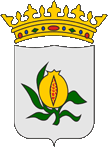
1492–1833,
Coat of arms of the Castilian Kingdom of Granada,
Source, by:
Wikipedia (DE)

The coat of arms of the Communidad Andalusia was, like the flag, officially introduced on 30st of December in 1981. It was created in 1918 by Infante Pérez de Vargas and was last amended in 1923. In reality it is no coat of arms (there is no shield), but an emblem. It shwos Hercules with two lions between two columns on a golden cartouche with the andalusian flag. On the flag is placed a golden inscription: "Andalucía por sí, para España y la Humanidad" ("Andalusia for itself, for Spain and the humanity"). Above the columns a half-round banner in andalusian colours with the golden inscription "Dominator Hercules Fundator" ("Ruler Hercules the founder"). Hercules should have been in Cádiz (the antique "Gadir") during his adventures and he is something like the founder of the country. The lions embody power and instinct, but they are even seen as symbols of the victorious Christianity. The "Columns of Hercules" (actually the both rocks on both sides of the Strait of Gibraltar) are the symbol for the transoceanic influence of Spain.
Source: Wikipedia (ES),
Volker Preuß

The autonomous Regions of Spain:
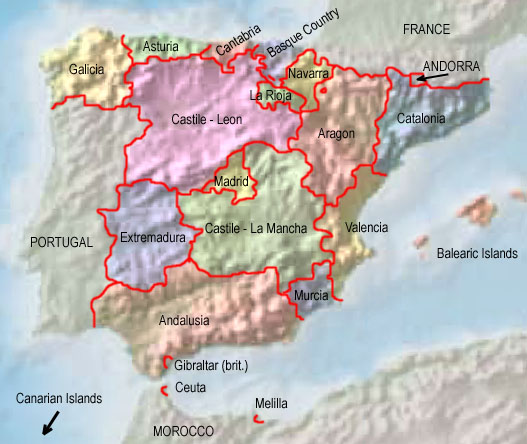
Source: Freeware, University of Texas Libraries, modyfied by: Volker Preuß

Area: 33.816 square miles
Inhabitants: 88.500.187 (2022), mostly Andalusians (descendants of Castilians, Arabs and Berbers)
Density of Population: 251 inh./sq.mi.
Capital: Sevilla, 681.998 inh. (2022)
official Language: Spanish (Castilian)
other Languages: Andalusian (= difficult Castilian dialect)
Currency: Spanish (Euro-) currency
Time Zone: GMT + 1 h
Source:
Wikipedia (EN)

early age · settlement by Iberians, legendary Kingdom of Tartessos (Tarsis)
11th–7th cent. B.C. · the coast is a colony of Phenicia
8th–6th cent. B.C. · greek colony Mainake at the coast near the today’s Nerja
ca. 600 B.C. · immigration of Celts, mix with the Iberians, evolution of the Celtiberians
3rd cent. B.C. · the coast ia a colony of Cathago
237 B.C. · the Empire of Carthago starts with the colonization of the hinterland
226 B.C. · Ebro Treaty between Rome and Carthago, the Ibero (Ebro) River is the frontier between Roman and Carthagian areas of influence
218–201 B.C. · Second Punic War between Rome and Carthago, the Roman Empire acquires the possessions of Carthago in Iberia, subjugation of whole Iberia until the year 19 B.C., Roman settlement, romanization, later even christianization, the today’s Andalusia belonges to the Roman province of Baetica
ca. 400 n.Chr. · Great Transmigration (Migration Period), immigration of Alans, teutonic Suebs and Vandals
411–429 · Empire of the Vandals in the today’s Andalusia
429 · arrival of the Western Goth in Andalusia in context of the Migration Period, expulsion of the Vanadals to northern Africa, the today’s Andalusia becomes a part of the Empire of the Western Goth
445 · invasion of the Vandals near Portus Magnus Urci (the today’s Almería)
589 · Third Concile of Toledo, the catholic christendom becomes the state religion of the Empire of the Western Goth
6th century · the Iberian south coast comes to the East Roman Empire (Byzantium)
700–711 · throne succession quarrels, the party of the throne successor Achila calls for the Arabs to enforce their interests (initially Berbers, called "Moros")
711–714 · annihilation of the Empire of the Western Goth by from northern Africa coming Arabs, the Western Goth retreat to Asturia and Cantabria, the today's Andalusia becomes occupied by the Arabs, arabization, islamization, the occupied country on the Iberian Peninsula is in the afteryears called "Al-Andalus" (probably "Country of the Vandals") by the intruders and belonged to the sphere of influence of the dynasty of the Omaijade-Califs in Damascus
722 · battle of Covadonga, Prince Pelayo of Oviedo (Asturia) beats the Arabs, start of the liberation war of the christian Iberian nations against the Arabs (Reconquista)
750 · overthrow of the dynasty of the Omaijads, seizure of power by the Abbasids, escape of the last Omaijade Abd Ar-Rahman from Damascus to the Iberian Peninsula
756 · troops of Abd Ar-Rahman conquer Córdoba, establishment of the Arabian Emirate of Córdoba on the Iberian Peninsula
812 · liberation of Pamplona Town from the Arabs by the Basques, establishment of the christian Kingdom of Pamplona (since 905 Navarra) in the north of the Iberian Peninsula
856 · liberation of León from the Arabs
924 · development of the christian Kingdom of León in the north of the Iberian Peninsula
929 · the Emirate of Cordoba becomes transformed ot the Arabian Califate of Cordoba under the dynasty of the Omaijads, the Berbers and Arabs are only a numerical little upper class, in this way it is initially not possible to propagate the Islam on the Iberian Peninsula successfully like in the other world spheres with merciless power, the Omaijads grant from there freedom of religious beliefs for Christs and Jews
1010 · overthrow of the dynasty of the Omaijads, succession quarrels, until 1040 the empire disintegrates in several Arabian kingdoms (E.G.: Malaga, Algeciras, Granada, Cordoba, Toldeo, Valencia, Zaragoza, Denia, Murcia und Badajoz)
1035 · development of the christian Kingdom of Aragon in the northeast of the Iberian Peninsula
1037 · development of the christian Kingdom of Castile-Leon in the north of the Iberian Peninsula
1083 · liberation of Madrid from the Arabs
1085 · liberation of Toledo from the Arabs, the Arabian king see themselves under pressure and call for the Almoravids, an islamic religious dynasty of the people of the Senhadsha Berbers in Africa
1086 · the Almoravids under Jussuf ibn Tashfin march in the Arabian islamic part of the Iberian Peninsula and seize the power, they are initially able to stop the advance of the christian armies, the stronger Arabian islamic might abolishes the freedom of religious beliefs for Christs and Jews
1094 · the legendary castile national hero El-Cid (el Campeador, really: Rodrigo Díaz de Vivar, 1043-1099) conquers and liberates Valencia, after his death (1099) conquered back by the Arabs
1118 · liberation of Saragossa (Zaragoza) from the Arabs, liberation of Tarragona from the Arabs
1125–1130 · the islamic religious dynasty of the Almohads prepares in Morocco the overthrow of the Almoravids dynasty
1130–1163 · victorious war of the Almohads against the Almoravids in north Africa
1137 · Aragon unites with the County of Barcelona
1147 · invasion of the Almohads under Abd al-Mumin in the Arabian islamic part of the Iberian Peninsula
1147 · liberation of Calatrava from the Arabs
1177 · liberation of Cuenca from the Arabs
1212 · battle of Navas de Tolosa, exulting victory of the armies of the christian kingdoms, annihilation of the empire of the Almohads, establishment of the Castilian Kingdom of Jaén (in the area of Jaén and Navas de Tolosa), disintegration of the former Almohads empire in several smaller kingdoms (E.G.: Cádiz, Sevilla, Córdoba, Algeciras, Málaga, Granada, Almería, Murcia), in Málaga, Granada and Almeria as Emirat of Granada under the dynasty of the Nasrids
1236 · liberation of Córdoba from the Arabs, establishment of the Castilian Kingdom of Córdoba
1238 · liberation of Valencia from the Arabs
1243 · Murcia Town becomes liberated from the Arabs by Alfons X. of Castile and his troops, establishment of the Castilian Kingdom of Murcia
1246 · the Emirate of Granada recognizes the supremacy of Castile-León and pays tributes
1344 · liberation of Algeziras from the Arabs
1248 · liberation of Sevilla from the Arabs, establishment of the Castilian Kingdom of Sevilla
1248 · liberation of Alicante and Cartagena from the Arabs
1262 · liberation of Cádiz from the Arabs
1462 · liberation of Gibraltar from the Arabs
1466 · Ali Abu al-Hasan, the Emir of Granada stops the payment of the tributes to Castile-León
1469 · Isabella I. Queen of Castile-Leon marrys Ferdinand II., the Prince and Throne-Successor of Aragon
1479 · coronation of Isabella and Ferdinand to Kings of Spain, Castile-Leon and Aragon become united to one country
1481 · Spain demands the revival of the tribute payments, Emir Abu al-Hasan attacks Spain in the spring, again onset of war between Spain and the Emirate of Granada
1482 · Emir Abu al-Hasan flees from Granada, his brother Abu Abd-Allahi proclaims himself to the new Emir, Abdallah – the son of Abu al-Hasan – restarts the tribute payments to Spain and banishes Abu Abd-Allahi, but after this he stops the tribute payments to Spain again, once more onset of war
1485 · liberation of Málaga from the Arabs
1487 · Granada id beleaguerd
1492 · the Emirate of Granada capitulates in February, establishment of the christian Kingdom of Granada, in this way elimination of the last bridgehead of the Arabs on European territory, Spain grants initially freedom of religious beliefs for the Muslims, the Jews become forced to adopt the christian believe or to leave the country
1499 · the in Andalusia living Muslims become forced to adopt the christian believe or to leave the country, ostensibly leave 3 millions of Muslims the country
16th century · the coastal places bloom because of the rising overseas trade with the colonies of Spain, however agriculture and craft see by the expulsions an economical decline
1525 · the Islam becomes prohibited
1567 · prohibition of the moresque language and moresque customs
1568 · revolt of the Moriscos (christian baptized Arabs)
1609 · the Moriscos become banished
17th/18th/19th century · in context of the descending importance of Spain as colonial and trade might starts the descend of the star of Andalusia
19th century · many Andalusians emigrate to Catalonia or to Basque Country
1833 · the until that point in time in Spain existing partial kingdoms and regions become divided in provinces, in Granada the provinces of Málaga, Granada and Almeria, the Castile Kingdoms of Murcia, Sevilla, Córdoba and Jaén become likewise transformed in provinces
1936–1939 · Spanish civil war, the provinces Sevilla and Córdoba fight on the side of the troops of General Franco against the socialistic central government, Málaga fights until 1937 on the side of the "republican" socialistic governmental troops, the "republican" territories in Andalusia surrender on 28th of March in 1939 together with the socialistic central government in Madrid
20th of November 1975 · death of General Francisco Franco
1976–1977 · East Andalusia trys to gain autonomy against Spain, promise for autonomy for whole Andalusia
11th of January 1982 · Andalusia gets the statute of autonomy within Spain (by summary of the provinces of Huelva, Sevilla, Cádiz, Córdoba, Jaén, Málaga, Granada and Almeria), establishment of the "Autonomous Community of Andalusia"
Source: Wikipedia (EN),
World Statesmen,
Volker Preuß

To clarify the origin of the name "Andalusia" – which was named by the Arabs "Al-Andalus" – there is none plausible explanation, but many theories:
1.) Theory by Reinhardt Dozy: The Arabs (actually Berbers) which debarked at the Iberian coast in the year 710 named the country after its former inhabitants, the Vandals, which lived there between 411 and 429 (Vandalusia).
2.) Theory by Heinz Halm: The Arabs used the name of the Western Goth for the Roman province "Baetica", namely "landa-hlauts". That means: "by lot distributed land“.
3.) further theory: As the Arabs debarked near the today’s Tarifa, that place – including the there placed island – had the Iberian name "Andaluz". With the expansion of the by Arabs (Berbers) controled territory that geographic term spreaded out in usage for the whole occupied land.
Source: Wikipedia (DE)


![]()



















